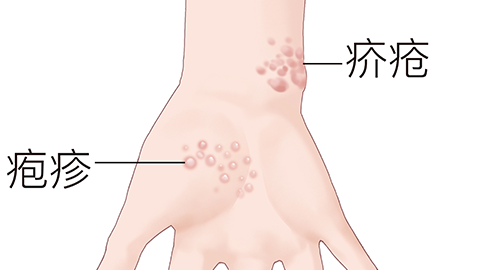What are the symptoms of herpes virus infection in men?
Generally, herpes virus infection in males is mostly caused by the herpes simplex virus. Common symptoms mainly include blisters in the genital area, localized pain and itching, discomfort during urination, swelling of the inguinal lymph nodes, secondary skin and mucosal damage, etc. The specific analysis is as follows:

1. Blisters in the genital area: After infection, symptoms often first appear in genital areas such as the penis, glans, coronal sulcus, or scrotum. Initially, there are scattered or clustered small blisters, which are transparent or pale yellow in color. The blister walls are thin and easily rupture during friction or cleaning, possibly forming superficial wounds. These wounds usually crust and heal gradually within 1-2 weeks.
2. Localized pain and itching: Before the blisters appear or along with the appearance of blisters, the local skin may feel hot and painful, followed by noticeable itching. This discomfort is often intermittent and may worsen at night or when body temperature rises. It often makes patients restless and affects daily activities and sleep.
3. Discomfort during urination: The virus may irritate the urethral mucosa, causing symptoms such as frequent urination and urgency. There may also be urethral pain or a burning sensation during urination. Particularly after the blisters rupture, contact of urine with the wound significantly intensifies the pain, and some patients may intentionally reduce urination due to the discomfort.
4. Swelling of the inguinal lymph nodes: During the infection outbreak, lymph nodes in the groin area may swell. Upon palpation, these nodes can feel like hard nodules the size of soybeans to broad beans. They have a relatively firm texture and are tender upon pressure. Usually, they do not adhere to surrounding tissues.
5. Secondary skin and mucosal damage: If proper local care is not maintained after blisters rupture, secondary bacterial infection may easily occur, leading to increased exudation and worsening redness and swelling at the wound site, and even the formation of superficial ulcers. After ulcer healing, temporary light red marks may remain. Repeated scratching may prolong the healing time of the lesions and increase the risk of infection spreading.
It is recommended that patients maintain local cleanliness and dryness during symptom outbreaks. Gently clean the affected area with warm water and pat dry with a clean towel. Avoid scratching or rubbing the affected area. At the same time, reduce intake of spicy and irritating foods and maintain a regular作息 to enhance immunity.




